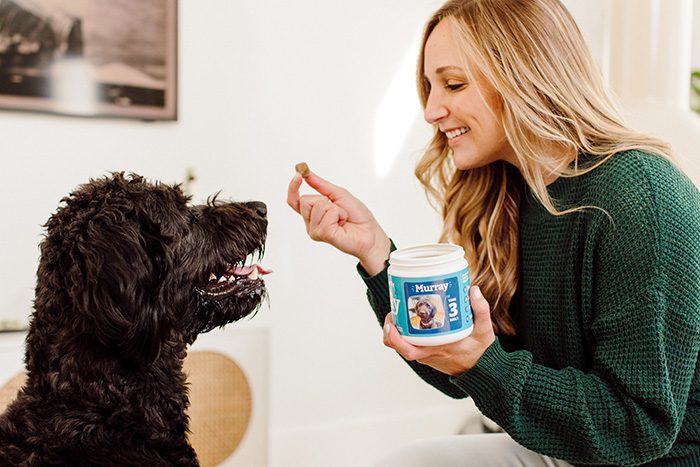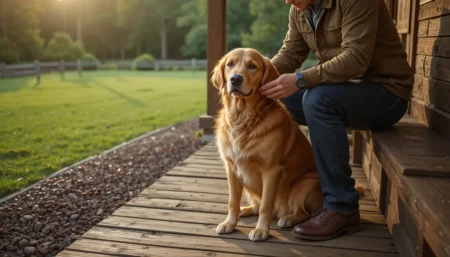AI for Pet Nutrition combines sensor data, health records, and machine‑learning algorithms to create fully personalized, real‑time feeding plans. It predicts nutrient needs, adjusts portions on the fly, and can even order meals automatically—making balanced feeding easier, more accurate, and more convenient for busy pet parents.
What Is AI for Pet Nutrition?
Artificial intelligence is now being applied to every stage of a pet’s diet, from analyzing blood work to suggesting the exact kibble amount for each meal.
In simple terms, AI for Pet Nutrition means a computer program that learns a pet’s unique requirements and then designs a feeding strategy that evolves as the animal grows or its health changes.
- Data‑driven: It gathers information from wearables, vet visits, and owner logs.
- Predictive: It forecasts future needs (e.g., calorie adjustments during weight loss).
- Actionable: It delivers concrete recommendations through apps, smart bowls, or subscription services.
The result is a diet that is far more precise than the “one‑size‑fits‑all” commercial formulas that dominate pet store shelves.
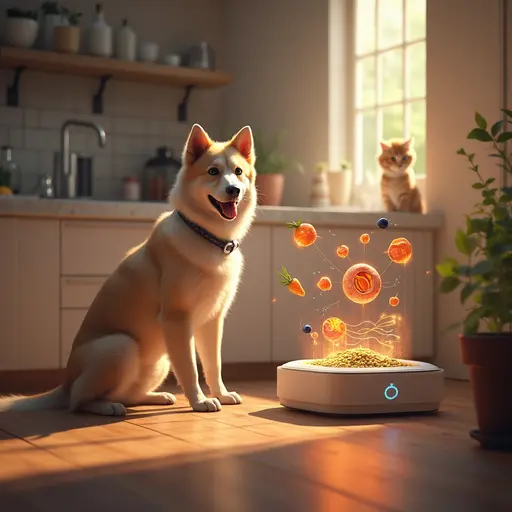
How AI for Pet Nutrition Analyzes Pet Health Data
Understanding a pet’s nutritional demands begins with accurate data. AI platforms pull from multiple sources, clean the information, and then run it through trained models to spot patterns only a human could miss.
Wearable Sensors and Activity Trackers
- Accelerometers record daily steps, jumps, and play bursts.
- Heart‑rate monitors detect stress or exertion spikes that signal higher caloric burn.
- Temperature sensors reveal metabolic changes tied to fever or hormonal shifts.
Veterinary Records and Lab Tests
- Blood chemistry (glucose, cholesterol, kidney markers) feeds into risk‑assessment modules.
- Imaging results (e.g., ultrasound) can hint at organ health that influences protein or sodium limits.
Owner Input and Lifestyle Factors
- Feeding schedule (times, treats, leftovers).
- Home environment (indoor vs. outdoor, multi‑pet household).
- Activity level (regular hikes, agility training, sedentary lifestyle).
By merging these streams, AI creates a comprehensive health profile that updates each time new data arrives.
Benefits of AI for Pet Nutrition
Pet owners who switch to AI‑powered feeding see measurable improvements across health, behavior, and convenience. Below are the most common advantages.
| Benefit | Why It Matters | Example |
|---|---|---|
| Precision Calorie Matching | Prevents under‑ or over‑feeding, reducing obesity risk. | A 20‑lb Labrador’s daily calories are trimmed from 900 kcal to 750 kcal, resulting in a 5‑lb loss in 8 weeks. |
| Dynamic Adjustments | Adapts to life‑stage changes, illness, or training spikes. | A senior cat’s protein target rises automatically when kidney labs show early decline. |
| Time Savings | Auto‑orders meals and programs smart dispensers. | Owners receive a weekly delivery of portion‑pre‑measured meals, eliminating store trips. |
| Enhanced Monitoring | Alerts owners to health changes before they become critical. | Sudden increase in activity triggers a calorie boost, avoiding fatigue during agility competitions. |
| Better Owner Confidence | Data‑backed plans reduce guesswork. | New puppy owners rely on AI’s step‑by‑step growth chart rather than generic guidance. |
These benefits translate into healthier pets and happier families.
Personalizing Diets with AI for Pet Nutrition
One of the most powerful aspects of AI is its ability to tailor nutrition to the individual, not just the species.
Life Stage and Breed Specifics
- Puppies and Kittens: High‑protein, DHA‑rich formulas to support brain development.
- Adult Dogs: Balanced ratios of protein, fat, and fiber based on activity level.
- Senior Pets: Reduced phosphorus, added joint‑support nutrients like glucosamine.
Weight Management and Metabolic Rate
- AI calculates Resting Metabolic Rate (RMR) from wearable data, then adds activity‑derived calories.
- It sets a target weight‑loss or maintenance curve and updates it weekly.
Medical Conditions and Allergies
- Renal disease: Low‑phosphorus, low‑sodium meals with omega‑3 fatty acids.
- Food sensitivities: Identifies culprits via symptom logs and suggests novel‑protein diets.
- Diabetes: Monitors glucose trends (if compatible glucometer data are provided) and adjusts carbohydrate portions.
Through these layers, AI for Pet Nutrition creates a plan that evolves as the pet’s health landscape changes.
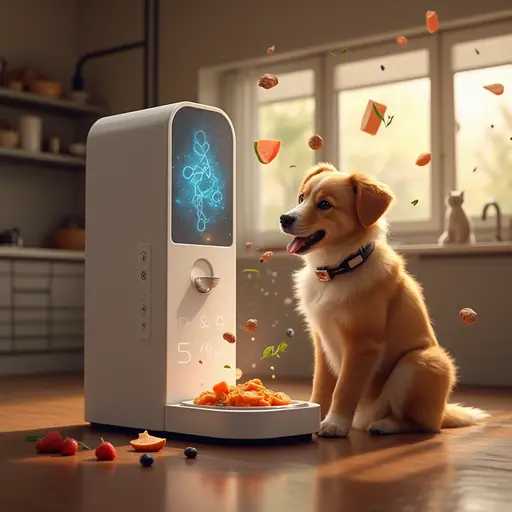
AI‑Powered Meal Recommendations and Delivery
Generating a perfect diet is only half the battle; getting the food to the pet at the right time is the other half. Several technologies now bridge that gap.
Smart Dispensers and Automatic Feeders
- Portion Control: Scales inside the bowl dispense the exact gram amount programmed by the AI system.
- Scheduling: Timers release meals at optimal intervals based on circadian rhythm analysis.
- Feedback Loop: Sensors confirm the pet has eaten; missed meals trigger push notifications to the owner’s phone.
Subscription Meal Services with AI
- Custom Formulations: Companies mix protein, fiber, and micronutrients per the AI‑generated recipe.
- Dynamic Shipping: Portion sizes are recalculated each month, and packaging adjusts automatically.
- Sustainability: AI optimizes ingredient sourcing to reduce waste and carbon footprint.
Together, these tools turn a complicated feeding regimen into a set‑and‑forget system.
Real‑World Success Stories Using AI for Pet Nutrition
Seeing data in action helps illustrate the tangible impact of technology.
Case Study 1 – Overweight Labrador Retriever
- Problem: 30 lb excess weight, sluggishness, joint strain.
- AI Intervention: Wearable tracked 12,000 daily steps; AI reduced calories by 15 % and introduced joint‑support supplements.
- Outcome: Lost 12 lb in 10 weeks, regained agility, vet confirmed improved joint health on X‑ray.
Case Study 2 – Senior Cat with Early‑Stage Kidney Disease
- Problem: Elevated creatinine, decreased appetite.
- AI Intervention: Analyzed bloodwork, recommended a low‑phosphorus diet, and scheduled more frequent, smaller meals to stimulate appetite.
- Outcome: Stabilized kidney markers for 18 months, the cat maintained ideal weight, owner reported higher energy.
Case Study 3 – Working Border Collie in Agility Competitions
- Problem: Inconsistent energy spikes, occasional cramping.
- AI Intervention: Monitored heart rate during practice, adjusted carbohydrate timing to a pre‑session snack of 20 g of glucose‑rich kibble.
- Outcome: Improved race times by 2 seconds on average, reduced post‑exercise soreness.
These stories show that AI for Pet Nutrition can address everything from weight control to high‑performance needs.
Limitations and Ethical Considerations of AI for Pet Nutrition
While the technology is promising, it is not without challenges.
Data Privacy and Security
- Personal health data (vet records, location, activity) is stored on cloud servers.
- Owners must review privacy policies and use strong passwords or two‑factor authentication.
Algorithm Bias and Breed Representation
- Early models trained on popular breeds (Labrador, German Shepherd) may misinterpret the needs of rarer breeds.
- Ongoing dataset diversification is essential to avoid inaccurate recommendations.
Overreliance on Technology
- AI should complement, not replace, regular veterinary check‑ups.
- Sudden health changes can outpace algorithm updates; human judgment remains vital.
Being aware of these drawbacks helps pet parents use AI responsibly.
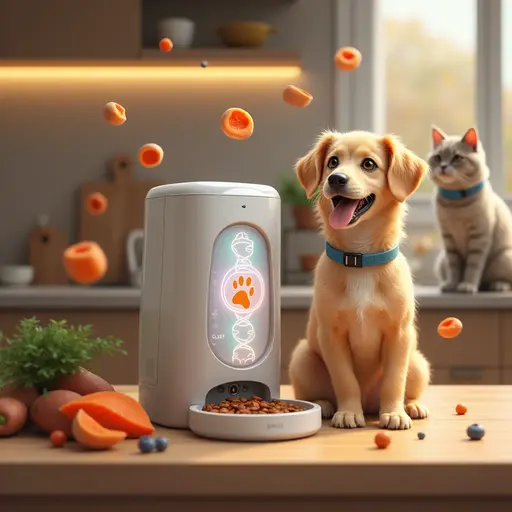
Choosing the Right AI for a Pet Nutrition Tool
Not all platforms are created equal. Follow these steps to select a solution that fits your household.
- Identify Core Needs – Weight management, medical condition, convenience, or performance.
- Check Data Integration – Does the app sync with your pet’s existing wearable or vet software?
- Evaluate Transparency – Look for clear explanations of how recommendations are generated.
- Test Customer Support – Responsive veterinary chat or nutritionist access is a big plus.
- Read Reviews and Trials – Start with a free month or a refundable pilot program before committing.
A systematic approach prevents costly missteps and ensures you get the most from your investment.
Integrating AI for Pet Nutrition with Traditional Veterinary Care
Veterinarians remain the gold standard for diagnosing disease, yet AI can enhance their workflow.
- Pre‑Visit Reports: AI dashboards can be shared with the vet, saving time on data collection.
- Medication‑Diet Interactions: AI flags potential conflicts (e.g., high‑potassium foods for dogs on ACE inhibitors).
- Monitoring Compliance: Smart feeders confirm whether prescribed diets are being followed.
When AI and veterinary expertise work together, pets receive a more holistic level of care.
Future Trends in AI for Pet Nutrition
The field is still in its infancy, and several breakthroughs are on the horizon.
| Trend | Potential Impact |
|---|---|
| Genomics and Microbiome Analysis | Tailor diets to an individual’s DNA and gut flora, improving digestion and immunity. |
| Real‑Time Adaptive Feeding | Continuous sensor feedback triggers instant portion tweaks during a single day. |
| Multi‑Pet Household Coordination | AI differentiates each animal’s bowl, preventing cross‑contamination and ensuring individualized nutrition. |
| Augmented Reality (AR) Guidance | owners point a phone at a bag of kibble and receive instant AI‑driven feeding tips. |
| Voice‑Activated Nutrition Assistants | Ask a smart speaker, “How much should Bella eat today?” and receive a precise answer. |
These innovations promise a future where feeding a pet is as effortless and precise as ordering a coffee.
FAQs
Is AI for Pet Nutrition safe for all pets?
Yes, when the system uses validated data, and you involve a veterinarian for medical conditions. AI provides recommendations, but a professional should confirm any major dietary change.
Do I need expensive wearables for AI to work?
Not always. Some platforms accept manual entries or basic activity logs, while others integrate with popular collars. Choose a solution that matches your budget and desired data depth.
How often does the AI update my pet’s feeding plan?
Most apps recalculate daily based on new activity, weight, and health inputs. Significant changes (e.g., surgery) usually trigger a manual review by a veterinary nutritionist.
Can AI help with food allergies?
Absolutely. By tracking symptoms after each meal, AI can pinpoint likely allergens and suggest novel‑protein or hypoallergenic formulas.
Will AI replace my vet’s nutrition advice?
No. AI is a decision‑support tool that augments, not replaces, a vet’s expertise. Think of it as a highly personalized cookbook that works alongside professional guidance.
Conclusion
AI for Pet Nutrition is reshaping how owners feed their companions by turning raw health data into precise, adaptable meal plans. It enhances calorie accuracy, offers dynamic disease‑specific adjustments, and streamlines the logistics of grocery delivery and smart feeding.
Yet, the technology works best when paired with regular veterinary oversight, robust data privacy practices, and an understanding of its current limits.
If you’re ready to give your pet a diet that truly evolves with its life, start by selecting an AI platform that integrates your existing health records, offers transparent algorithms, and provides a trial period.
Once you’ve set up the system, monitor the weekly reports, involve your vet when needed, and watch your furry friend thrive on a scientifically optimized menu. The future of feeding is here—make it work for you and your pet today.



